Alongside their premium lineups of thin-and-light Yoga 9i ultraportables, Lenovo are also updating their more mainstream Yoga 7i 2025 gen 10 models for the year.
We’ll discuss in this article the Yoga Slim 7i 14-inch Aura Edition, a more compact and lightweight iteration of the Slim 7i 15-inch tested in this article, as well as the 2025 Yoga 7i 2-in-1 models, in either 14-inch and 16-inch sizes.
The Yoga Slim 7i is a lightweight mid-range clamshell ultrabook, with a metal chassis, OLED display, and Lunar Lake hardware, weighing around 2.75 lbs and starting at $1099.
The Yoga 7i 2-in-1 models are convertible designs with metal builds, OLED or IPS displays, and Lunar Lake specs. They’re even more affordable, starting at around $900 MSRP.
We’ll review these over the following weeks and months, while it this article we’ll briefly go over their particularities and specs, as well as touch on how they compare to their higher-tier and significantly more expensive Yoga 9i counterparts.
Lenovo Yoga Slim 7i 14/15 Aura Edition specs
| Lenovo Yoga Slim 7i 14 Aura Edition, gen 10, 2025 model |
Lenovo Yoga Slim 7i 15 Aura Edition, gen 9, late-2024 model |
|
| Screen | 14 inch, OLED, 16:10 aspect ratio, touch, glossy, 2.8K 2880 x 1800 px, 120Hz, 500-nits, 100% DCI-P3 |
15.3 inch, IPS, 16:10 aspect ratio, touch, glossy, 2.8K 2880 x 1800 px, 120Hz, 500-nits, 100% DCI-P3 |
| Processor | Intel Lunar Lake, up to Core Ultra 7 258V, 4PC+4LPE/8T, up to 4.8 GHz |
|
| Video | up to Intel Arc 140V, 8 Xe Cores, up to 2.05 GHz | |
| Memory | up to 32 GB LPDDR5-8533 (soldered) | |
| Storage | 1x M.2 2242 slot | |
| Connectivity | Wireless 7 (Intel BE211) 2×2, Bluetooth 5.4 | |
| Ports | left: 2x USB-C with Thunderbolt 4, 1x HDMI 2.1, micro SD card reader right: 1x USB-A 3.2 gen1, 1x audio jack |
left: 1x USB-C with Thunderbolt 4, 1x HDMI 2.1, 1x audio jack right: 1x USB-A 3.2 gen1, 1x USB-C with Thunderbolt 4 |
| Battery | 70 Wh, 65W USB-C charger | |
| Size | 312 mm or 12.3” (w) x 219 mm or 8.63” (d) x from 13.9 mm or 0.55” (h) | 344 mm or 13.54” (w) x 235 mm or 9.27” (d) x from 13.9 mm or 0.55” (h) |
| Weight | from 2.65 lbs (1.2 kg) + .25 (.6 lbs) for charger | 3.4 lbs (1.55 kg) + .25 (.6 lbs) for charger |
| Extras | all-aluminum clamshell format with 180-degree hinge, dual-fan dual-radiator cooling, white backlit keyboard, 1.5 mm travel, plastic touchpad, 2MPx FHD webcam with IR (5 MPx camera on 14-inch models), privacy kill button, 4x mics, 4x speakers, 2x bottom, 2x top, Luna Grey or Seashell colors |
|
While the naming is rather confusing, the Slim 7i 14 Aura Edition gen10 is very similar to the 15-inch model launched a few months ago. However, this is a more compact 14-inch chassis and a significantly lighter one at 2.7 lbs vs. 3.5 lbs for the 15-inch model.
The overall design language and build are the same between them, with an all-metal chassis and fairly sturdy build quality. Based on my recent experience with the Slim 7i 15, these laptops don’t feel quite as nice and premium as the higher-tier options (Yoga 9i, XPS, MacBooks, even Zenbooks), but they’re pretty close. And don’t forget they don’t cost quite as much as those other options.
Unlike the Yoga Slim 9i, you’re offered more ports on this Slim 7i models, with an extra full-size HDMI and a micro SD card reader (only on the 14-inch model). The 14-inch model also gets a better 5MPx camera, while the one on the 15-inch unit was a rather mediocre 2Mpx shooter.
However, while the USB-C ports are split on both sides on the 15-inch chassis, you’re only getting them on the left edge on the 14-inch variant, which limits charging and connecting peripherals on that side only.
The inputs are a little different on the Slim 7is than on the Slim 9i model, with a rather slippery coating, at least on the 15-inch model I’ve tested. The typing experience is a bit loud as well. You need to spend time with these devices to figure such things out, as otherwise, everything looks great from the pictures and specs. You might also notice that the keyboard is a slightly different color than the main chassis on these 7i models, while on the 9is the keys and the chassis color match.
Otherwise, the keyboards seem identical on both of these Slim 7i sizes, with just smaller speaker cuts on the sides on the 14-inch variant. Both implement a set of 4x speakers, with punchy audio quality. However, the speakers pushed a lot of vibrations into the chassis on the 15-inch unit, so I’d look into whether they addressed the isolation in any way on the 14-inch variant.
As far as the screens go, while the 15-inch Slim 7i comes with a good quality IPS panel, the 14-incher is offered with an OLED, the same OLED implemented in the Yoga 9i as far as I can tell. Both are glossy and support touch.
The IPS on the Slim 7i 15-inch was actually a differentiator over most other Windows portable laptops, as the majority are OLED implementations these days. I guess it’s OK that you now get to choose both options on the two models.
Specs-wise, these Yoga Slim 7i notebooks are built on the same Intel Lunar Lake hardware platform, up to a Core Ultra 258V with 32 GB of LPDDR5x memory and SSD storage through a compact M.2 2242 drive.
The hardware is cooled by a dual-fan dual-heatsink dual-heatpipe thermal module, which perfectly handles the Ultra 200v hardware with excellent temperatures and quiet fan noise, usually under 35 dBA and up to 38 dBA in sustained loads on the Performance profile. Sure, Lunar Lake is not a powerful platform per se, but it can handle multitasking just fine and it can run games as well, thanks to the competent Intel Arc 140v iGPU.
The cooling on the 14-inch model should be the same, with perhaps slightly shorter heatpipes. But the overall experience should be very similar to what we got on the 15-inch variant.
Runtimes should be similar as well, since both units implement 70Wh batteries. Expect 8-12 hours of daily use and 15+ hours of light use and media streaming. Quite impressive, as efficiency is one of the main selling points of Lunar Lake configurations.
Speaking of, Lenovo expects to have the Yoga Slim 7i 14-inch in stores around February 2025, starting at $1099. The current Slim 7i 15-inch model starts at around $1149 at the time of this article for the Core Ultra 256V specs and 16 GB of RAM, but I’ve seen it as low as $999 on sale.
That’s fairly competitive pricing for what you’re getting with these laptops, although those of you shopping on a limited budget might want to look into the previous Lenovo Slim 7i iterations with Meteor Lake hardware as well, which you can get for around $700-$800 these days. They’re nowhere near as efficient on battery power, though.
Lenovo Yoga 7i 2-in-1, 2025 gen 10
| Lenovo Yoga 7i 2-in-1 14, gen 10, 2025 model | Lenovo Yoga 7i 2-in-1 16, gen 10, 2025 model | |
| Screen | 14 inch, 16:10 aspect ratio, touch, glossy, OLED 2.8K 2880 x 1800 px, 120Hz, 500-nits, 100% DCI-P3 OLED 2K 1920 x 1200 px, 60Hz, 400-nits, 100% DCI-P3 IPS 2K 1920 x 1200 px, 60Hz, 300-nits, 45% NTSC |
16 inch, 16:10 aspect ratio, touch, glossy, OLED 2.8K 2880 x 1800 px, 120Hz, 500-nits, 100% DCI-P3 IPS 2K 1920 x 1200 px, 60Hz, 300-nits, 45% NTSC |
| Processor | Intel Lunar Lake, up to Core Ultra 7 258V, 4PC+4LPE/8T, up to 4.8 GHz |
|
| Video | up to Intel Arc 140V, 8 Xe Cores, up to 2.05 GHz | |
| Memory | up to 32 GB LPDDR5-8533 (soldered) | |
| Storage | 1x M.2 2242 slot | |
| Connectivity | Wireless 7 (Intel BE211) 2×2, Bluetooth 5.4 | |
| Ports | left: 1x USB-A 3.2 gen1, 1x USB-C with Thunderbolt 4, micro SD card reader right: 1x USB-C with Thunderbolt 4, 1x HDMI 1.4b, 1x audio jack |
|
| Battery | 70 Wh, 65W USB-C charger | |
| Size | 317 mm or 12.51” (w) x 228 mm or 8.98” (d) x from 15.45 mm or 0.61” (h) | 361 mm or 14.21” (w) x 257 mm or 10.11” (d) x from 15.85 mm or 0.62” (h) |
| Weight | from 3.05 lbs (1.38 kg) + .25 (.6 lbs) for charger | from 3.9 lbs (1.77 kg) + .25 (.6 lbs) for charger |
| Extras | all-aluminum 2-in-1 convertible format with 360-degree hinge, single-fan single-radiator dual-heatpipe cooling, white backlit keyboard, 1.5 mm travel, plastic touchpad, 2MPx or 5MPx webcams with IR, fingerprint sensor, privacy kill button, 2x mics, 4x speakers, 2x bottom, 2x top, Luna Grey or Seashell colors |
|
The Yoga 7is are the mainstream convertible laptops in Lenovo’s lineup, and among the best selling 2-in-1 laptops on the entire market.
For this 2025 10th-generation, Lenovo revised the chassis to some extent, making both models more compact and lighter than their predecessors. Some of the ports were cut out in the process, but that aside, nothing significant has changed to the worse.
The design language of these Yoga 7i models is similar to the Slim 7i discussed above, with mid-level all-metal construction and clean branding markups. The screen goes all around to 360 degrees, allowing you to use these devices as laptops or tablets or anything in between. They’re at their best as laptops, though.
For comparison, the higher-tier Yoga 9i 2-in-1 series is only available as a 14-inch model and is a little more compact and lightweight, while feeling superior in craftmanship and the quality of the chassis. The keyboard is also a little different, with a more grippy coating on the keycaps and keycaps that are actually the exact same color as everything around. On the 7i models, the keycaps are a slightly different shade on both the Luna Gray or the Seashell color variants.
Of course, it goes without saying that the 16-inch Yoga implements a larger keyboard with a NumPad section, while the keyboard on the 14-inch unit has a more standard basic layout.
You’re also given a more ample choice of displays on these mainstream 2-in-1 Yogas, with either IPS or OLED panels. However, steer away from those base IPS options, they’re poor-quality panels with limited brightness and muted colors. The OLEDs are fine, though, both the 2K and the 2.8K options. And keep in mind these implement digitizers and bundle a pen by default, which can be attached magnetically to the back of the lid – it’s not a very secure grip, though.
The hardware on these Yogas is the same Lunar Lake implemented on all other Yogas launched at the beginning of 2025, but the cooling on these is a little more basic. Nonetheless, the daily-use experience should be fine on this efficient platform, but with slightly higher temperatures and louder fans.
Runtimes on battery power should be on par with the other Yogas as well, since these Yogas implement the same 70Wh battery and the same displays and specs: around 10 hours of daily use and 15 hours with very light use and streaming.
All in all, this generation of the Lenovo Yoga 7i 2-in-1 is even more competitive than in the past, with the smaller footprint, lighter weight and hardware that’s both more capable across the board than the Intel Core U platforms of the past, as well as way more efficient.
Pricing is quite a lot higher than in the past, though, with the 14-inch model starting at $899 and the 16-inch model at $949. And that’s most likely for the IPS screen configurations, which are definitely NO GO. Make sure you’re getting the OLED variants, even if that means waiting for some discounts further down the road. In comparison, current gen9 Yoga 7i 2-in-1 models start at as low as $499 today.

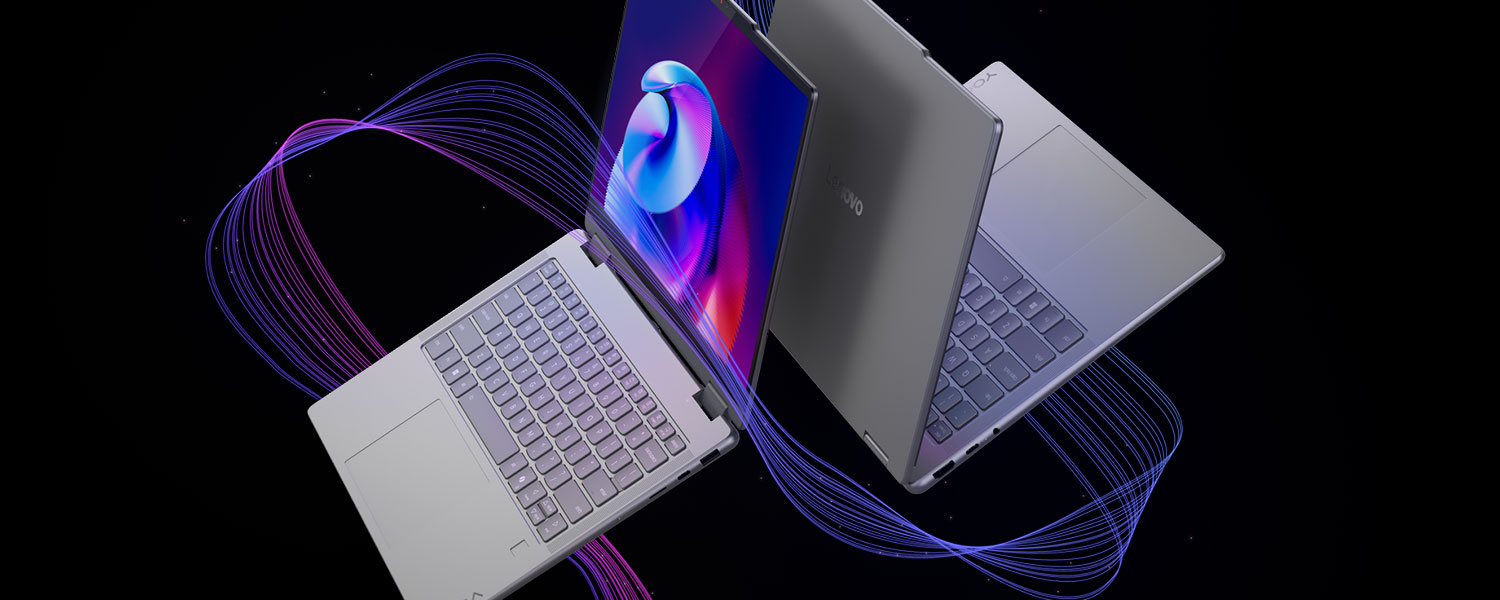
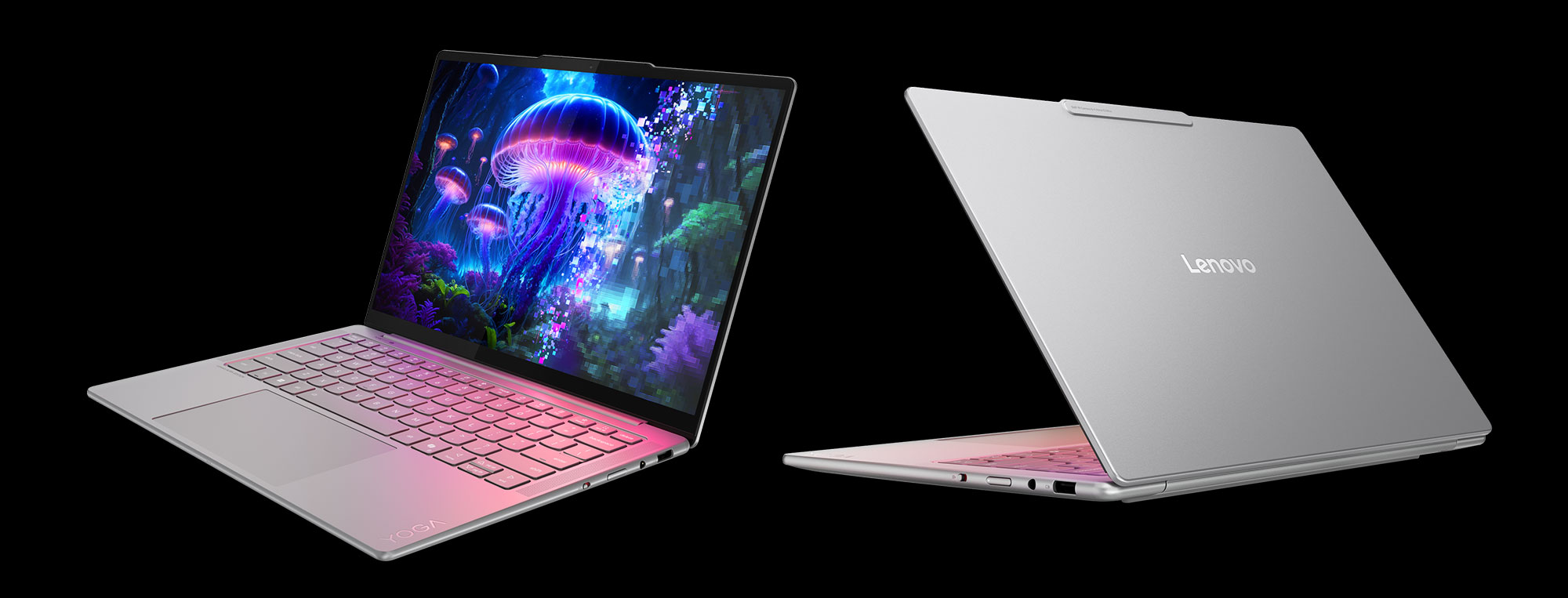
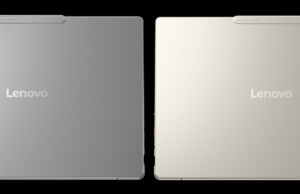
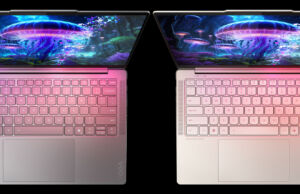
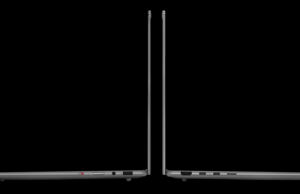
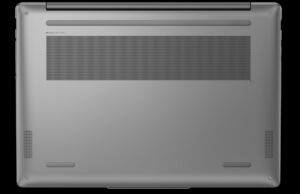
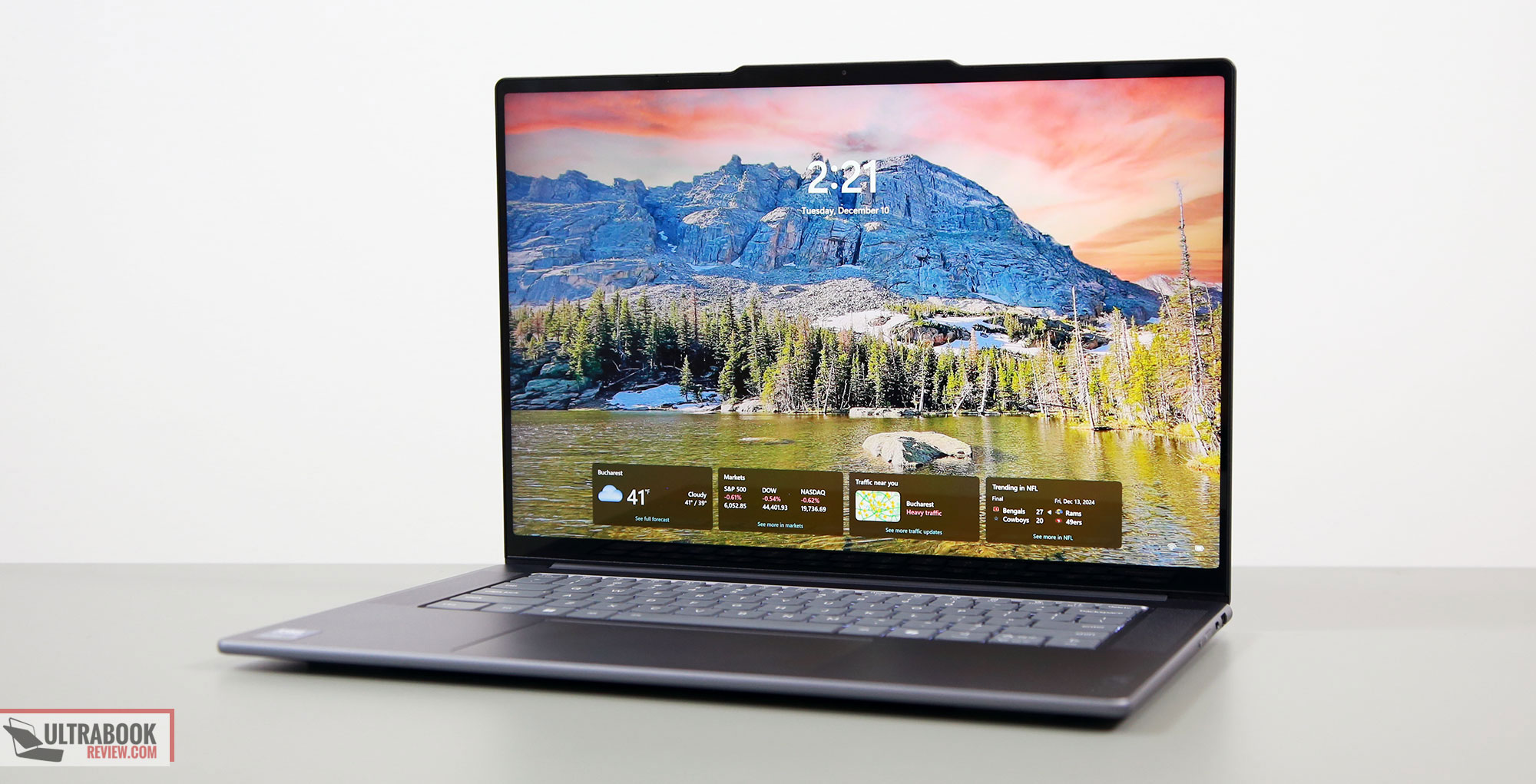
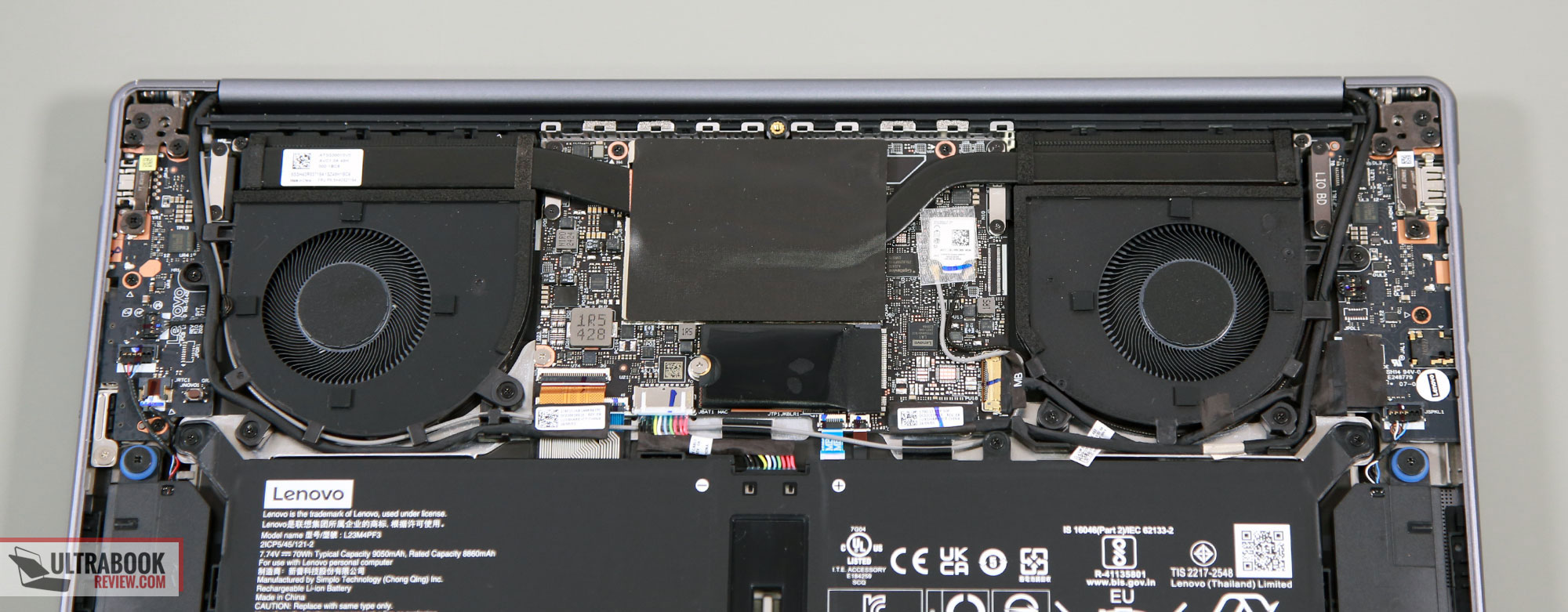
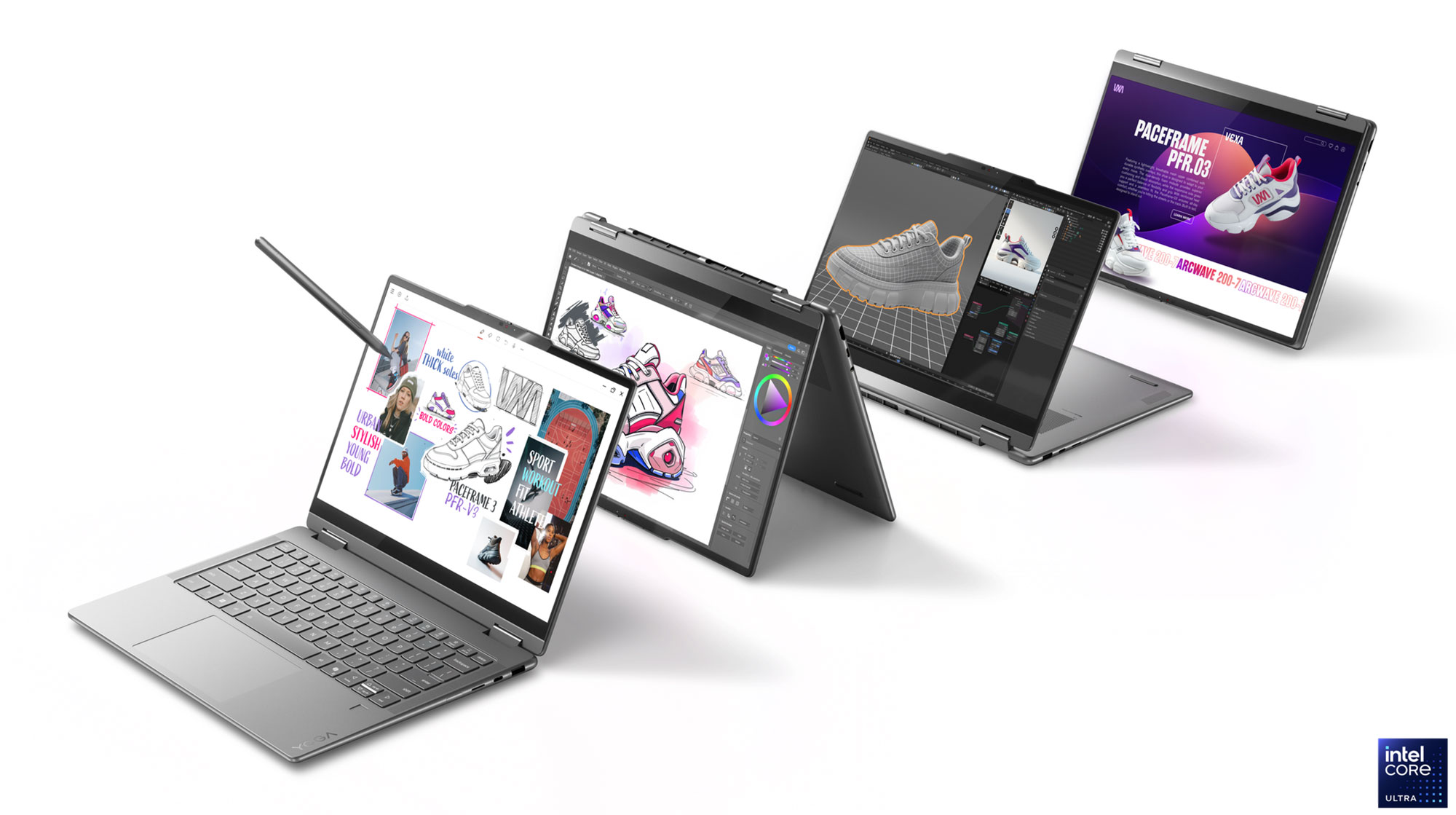
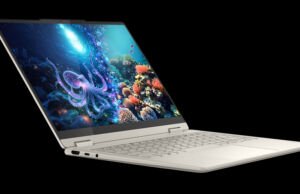
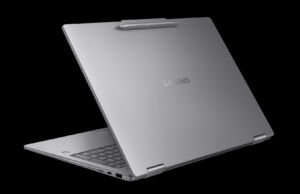
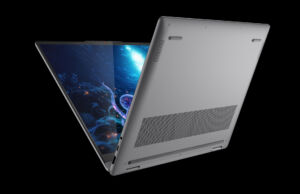
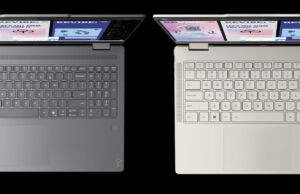

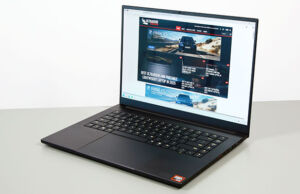
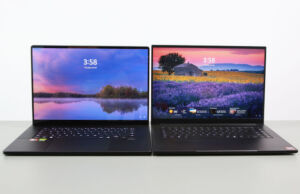
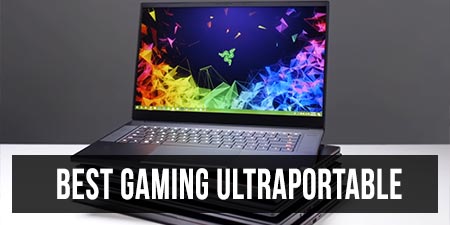
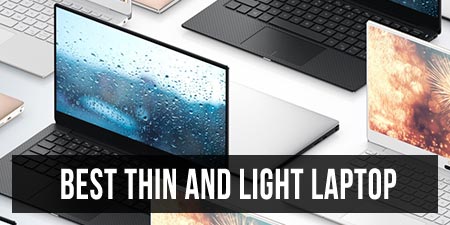
Dorian
January 15, 2025 at 11:33 pm
Do we know if the slim 7i aura 14 inch will be available in US and when? There is one model up for preorder but its not the 2.3k display version just an HD option.
Andrei Girbea
January 20, 2025 at 11:51 am
no idea on the exact configurations available in each region. you'd have to contact Lenovo support and ask about it